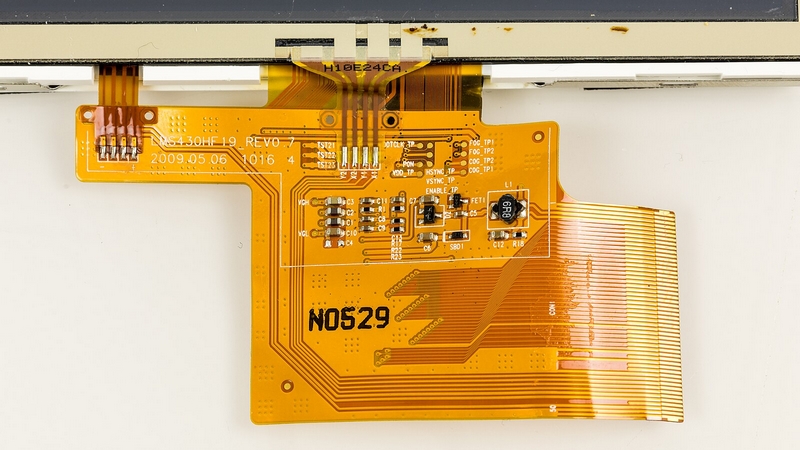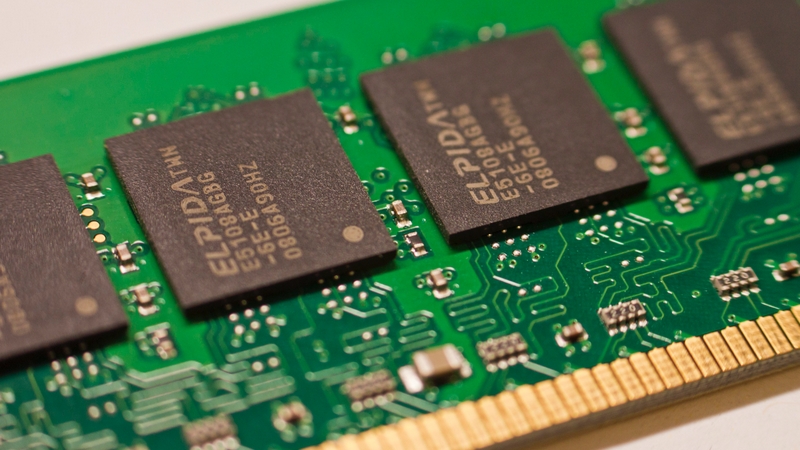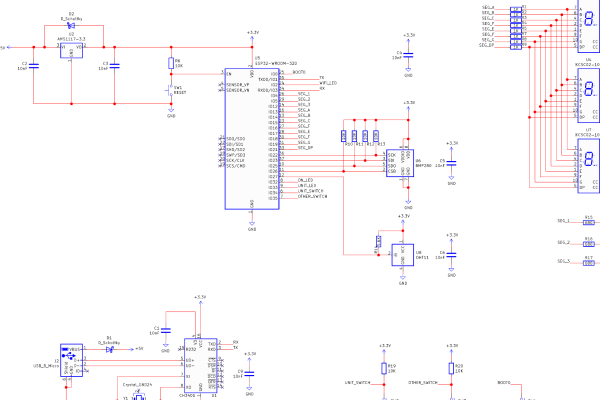
Flexible vs. Rigid PCBs Explained Simply
Printed Circuit Boards (PCBs) are indispensable components in the realm of modern electronics, serving as the backbone for virtually all electronic devices. PCBs provide the necessary electrical connections and support for various components such as transistors, resistors, and integrated circuits. While many people are familiar with the typical rigid PCBs, there is also a versatile variant known as flexible PCBs that caters to specific engineering needs.
Rigid PCBs are the more traditional form of circuit boards and are characterized by their solid, inflexible nature. They are manufactured from a hard substrate, which provides a sturdy base that helps protect the electronic components mounted on it. This type of PCB is prevalent across a myriad of industries. You’ll find them inside everyday consumer goods like smartphones and refrigerators, in computer and server components, in the operational controls of industrial machinery, and even in the sophisticated electronics of aerospace technology. The widespread use of rigid PCBs can be attributed to their durability and the ease of incorporating them into various electronic products.
Conversely, flexible PCBs introduce an element of mechanical adaptability that rigid PCBs cannot offer. Made from materials that can withstand bending and flexing, these PCBs are particularly useful in applications where the electronic components need to conform to a specific shape or where the board itself needs to be flexible to accommodate movement or reduce space. For instance, in motorized scanners and robotics, flexible PCBs allow for smooth and continuous movement without compromising the functionality of the electronic components. Similarly, in handheld controllers, these flexible circuits can endure repeated handling and bending, which is typical in day-to-day use.
Pros & Cons of Flexible PCBs

The inherent flexibility of PCBs offers a significant advantage over traditional rigid PCBs in environments that experience vibration, shock, or constant movement. Such mechanical stress can damage PCBs and components, reducing the lifespan of electronic equipment. The resilience of flexible PCBs makes them ideal for applications that require durability and longevity, such as in aerospace and automotive industries. However, the ability to bend and flex also introduces challenges that must be carefully managed to ensure the longevity of electronic equipment.
One of the primary challenges associated with flexible PCBs is the potential for weakened solder joints between components and the board. Since components themselves are not flexible, they cannot bend along with the PCB, and repeated flexing of the PCB can lead to metal fatigue and solder cracking. This is particularly problematic for soldered joints between the PCB and components, which are critical for maintaining electrical connections and ensuring the reliability of the circuit. The limitations in component flexibility also restrict the types of components that can be used on flexible PCBs, which in turn affects the processing capabilities of electronic devices.
The future of electronic design will likely involve a balance between the benefits of flexibility and the limitations imposed by component compatibility and processing power. While flexible PCBs can enhance the durability and form factor of electronic equipment, they may not be suitable for all applications, particularly those that require high-performance computing capabilities. As the demand for advanced computing increases, engineers will need to explore new solutions that balance flexibility with processing power to optimize the performance of electronic devices. The integration of advanced components and systems into flexible devices will be critical in achieving this balance and unlocking new possibilities in electronic design.
Pros & Cons of Rigid PCBs

Rigid PCB technology has reached a level of maturity whereby its manufacturing process is highly efficient and cost-effective, making it economically viable for a wide range of projects. The ability to scale from prototypes to mass production without significant changes in design or material properties also makes rigid PCBs advantageous, especially for industries that require prototypes that are production-ready. Recent advancements in PCB manufacturing technology now make it more cost-effective to design and produce custom PCBs compared to traditional prototyping methods, and the reliability and durability of custom PCBs make them a better option for long-term projects.
The materials used in rigid PCBs, such as FR-4, also make them ideal for controlling impedance, which is essential for high-speed circuits, and the consistent dielectric properties ensure signal integrity and minimize noise and interference. However, the inherent rigidity of these PCBs also leads to mechanical failures in environments subject to vibration and shock, such as automotive and aerospace applications, due to the inability of the PCB to flex and absorb impacts.
The inflexibility of rigid PCBs also makes them unsuitable for wearable technology, where electronics need to conform to the body and be able to move with bodily motions. Furthermore, the inability of rigid PCBs to adapt to non-linear shapes, such as curved surfaces and complex geometries, restricts their use in modern design contexts, including enclosures and equipment with unique designs. Finally, repeated mechanical stress, such as vibration and impacts, can cause connectors and components to break off the PCB, making rigid PCBs unsuitable for environments subject to repeated mechanical forces.
Real World Applications for Both
Just like with any technology, both technologies have their own respective applications, each suited to different needs and requirements in the electronics industry. Ridged PCBs, known for their durability and cost-effectiveness, are ideal for applications that require mass production of products at a low price.
This affordability and robustness make them a popular choice in the manufacturing of common consumer electronics. Devices such as computers, phones, and sensors, along with household appliances often referred to as whitegoods—like refrigerators and washing machines—rely heavily on ridged PCBs.

Beyond consumer electronics, ridged PCBs are also integral to more critical applications. They are employed in aerospace systems, where reliability under extreme conditions is paramount. Similarly, industrial controllers and drivers that manage machinery operations, as well as military systems which demand high performance and reliability, utilize these technologies for their proven stability and endurance. The medical industry also benefits from the use of these technologies in various devices, where consistent performance can be a matter of life and death.
Moreover, rigid PCBs are excellent for prototyping. Their straightforward design and manufacturing process allow engineers and developers to create and test new designs efficiently and cost-effectively. This accessibility makes them an invaluable tool in the development phase of product design, where modifications and iterations are frequent.
On the other hand, flexible PCBs serve a different set of needs. They are particularly useful in applications that require connections between two points with the flexibility to accommodate movement or bending. A common example is in digital cameras, where flexible PCBs are used to connect the camera lens and sensor to the main motherboard. The flexibility of such PCBs is crucial as it allows for the delicate placement of components within confined spaces without the risk of damaging cables or the technology itself.

Furthermore, flexible PCBs represent a cornerstone in the development of modern technology. Next-generation devices, which include trackers and watches, must conform to the wearer’s body and endure a range of motion and physical stress. The inherent flexibility and lightweight nature of flexible PCBs make it ideal for this purpose, enabling the creation of cutting-edge devices that adapt seamlessly to a person’s body shape and movements.
Key Takeaways
Flexible and rigid PCBs each offer distinct advantages and disadvantages, making them suitable for different applications rather than one being inherently superior to the other.
Rigid PCBs, which consist of a solid substrate material that prevents the board from bending, are typically used in standard electronic products where the shape does not need to change once manufactured, such as in computers and televisions. Their rigidity ensures durability and supports heavier components effectively.
Flexible PCBs, on the other hand, are built on flexible plastic substrates such as polyimide or polyester film. These boards can flex and bend, allowing them to be used in applications where space is constrained or where the PCB needs to conform to a specific shape within the product, like in cameras or wearable technology. This flexibility opens up new design possibilities and can significantly reduce the size and weight of the final product. Despite their innovative capabilities, flexible PCBs are relatively newer in the market compared to their rigid counterparts.
Rigid PCB technology is more established, which has allowed it to become highly optimized and easier to scale in manufacturing processes. Industries that have been using rigid PCBs for decades have honed their production techniques to maximize efficiency and cost-effectiveness, making rigid PCBs generally less expensive per unit when produced in large volumes.
Flexible PCBs, however, offer substantial advantages in manufacturing and production flexibility. They can significantly simplify the assembly process by allowing components to be connected without the need for additional wiring, thereby reducing the overall bulk and weight of the product. This can be particularly beneficial in modern electronics, which are increasingly becoming smaller and more compact.
Additionally, the inherent flexibility of these boards means they can be folded or twisted, which is crucial in industries like modern wearables and medical devices where form and fit are as important as functionality. Moreover, the installation of flexible PCBs can be gentler on the components since they do not require the same level of physical pressure during assembly as rigid boards. This reduces the risk of damage to sensitive parts during manufacturing, leading to potentially lower defect rates and higher reliability of the final product.
Why Choose Ponoko
Choosing between flexible and rigid PCBs is a significant decision in the electronics manufacturing industry, and each type has its own set of advantages and challenges. However, we at Ponoko understand that the real challenge lies not just in choosing the type of PCB but in the complexities involved in their production. Manufacturing PCBs requires precision and a deep understanding of material science and engineering principles. We know that the learning curve for effectively manufacturing, handling, and using materials like polyimide or polyester can be steep and time-consuming.

That’s where we come in. Utilizing our specialized services at Ponoko can help you cut down on the time traditionally required to learn the intricacies of PCB production. This approach not only saves you time but also reduces the costs associated with the learning process—costs that you can redirect towards innovation and further development of your project. With our expertise in rapid manufacturing and handling both flexible and rigid PCBs, we offer a compelling solution.
By outsourcing your manufacturing needs to us, you can focus your resources and time on core competencies such as product development and market introduction. This shift in focus can lead to faster turnaround times from concept to market, which is crucial in today’s fast-paced technological landscape. Our track record speaks volumes about our capability and reliability. With a precision part quality rate of 99.7% across 2 million parts and a customer base of over 33,000 satisfied clients, we have demonstrated our ability to deliver high-quality PCBs consistently.
In conclusion, while the initial choice between flexible and rigid PCBs depends on your specific project requirements, deciding to employ Ponoko’s specialized services for their production can profoundly impact the overall success of your project. By alleviating the burdens of manufacturing, we enable you to enhance your focus on innovation and product development.
Using PCBs in your next project
- What are the benefits of using rigid PCB substrates like FR4 in electronics?
- The use of rigid PCB substrates such as FR4 is the norm in the electronics industry due to their ability to provide mechanical stability, heat resistance, and electrical insulation. These characteristics make FR4 ideal for a wide range of applications, including computers and home appliances, ensuring that PCBs remain stable and secure during operation. While rigid PCBs offer engineers with a multitude of material options, flexible PCBs constructed using polyimide materials offer engineers with new design possibilities, including wearable technology, flexible screens, and medical devices that can conform to the human body.
- What are the design possibilities offered by flexible PCBs made from polyimide materials?
- One of the major advantages of flexible PCBs is their ability to replace traditional cables connecting different PCBs, thereby reducing space and weight. However, their flexibility can also lead to mechanical instability, making them prone to damage from repeated bending. Additionally, the complex manufacturing process and specialized equipment required for their production increase their cost compared to rigid PCBs. The component density of flexible PCBs is also lower due to the need for components to be able to flex, limiting the types of components that can be used.
- How does the advancement in technology impact the cost and practicality of flexible PCBs in future electronics?
- While flexible PCBs are more expensive than their rigid counterparts, their ability to conform and flexibility could make them the ideal choice for future electronics, especially with the advancement of component density and the reduction in size of IC packages. The continued improvement in technology and design techniques also helps to increase the component density of flexible PCBs, making them more practical in the real world.


